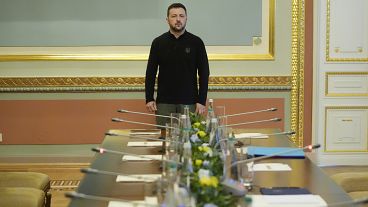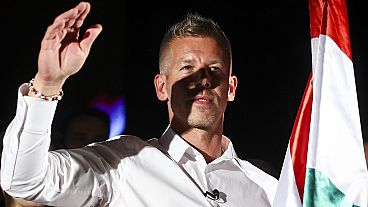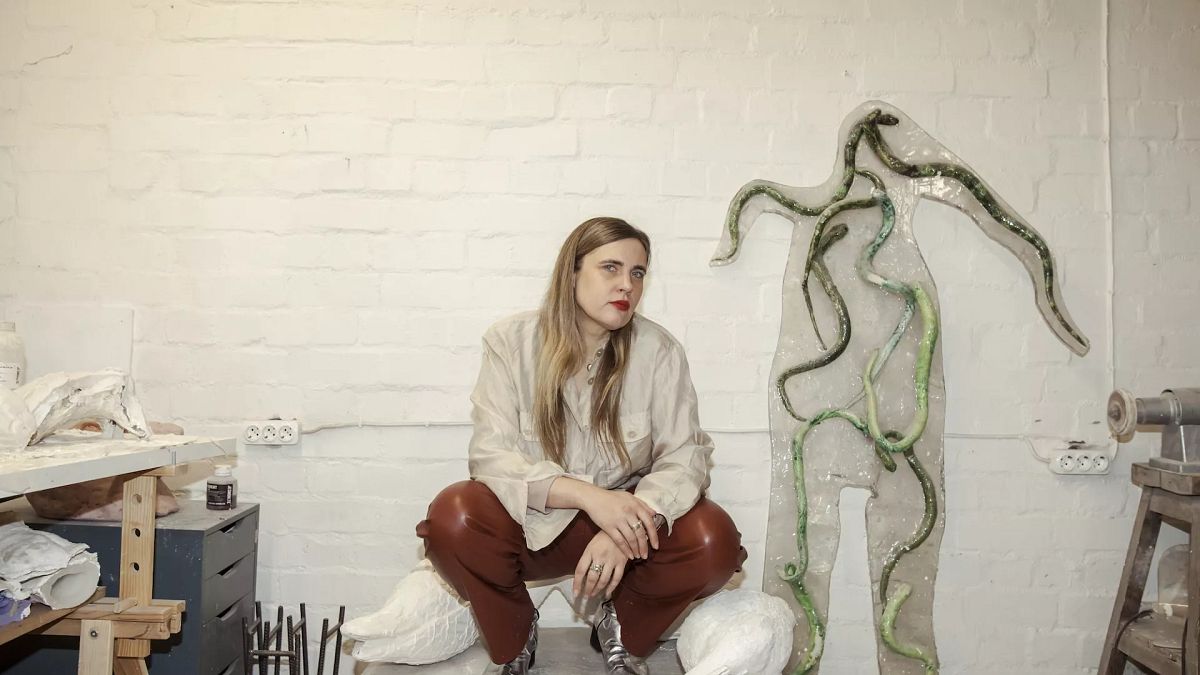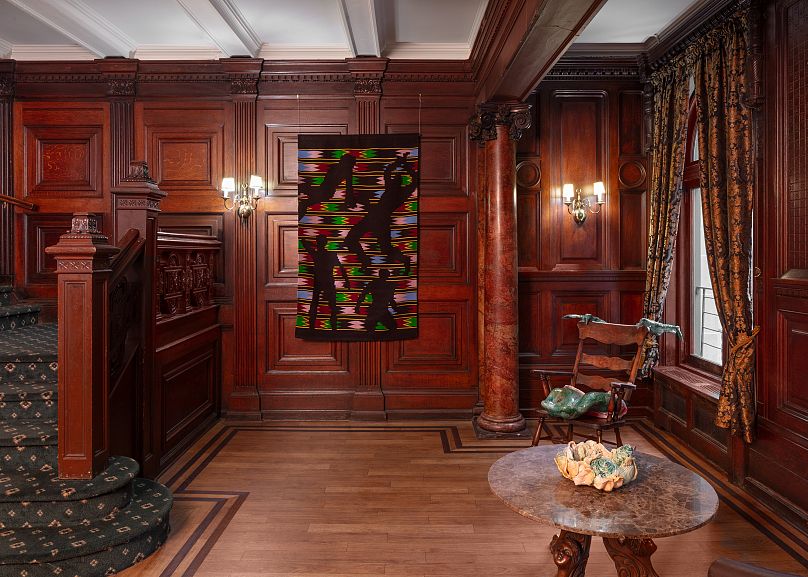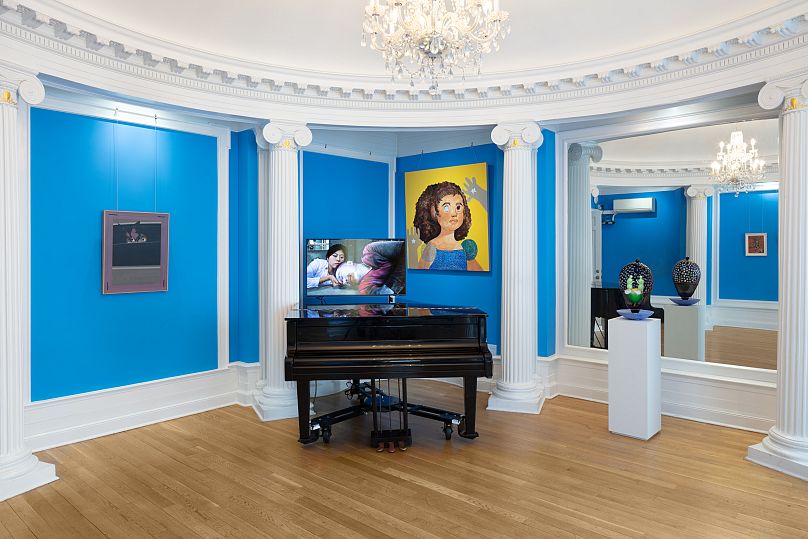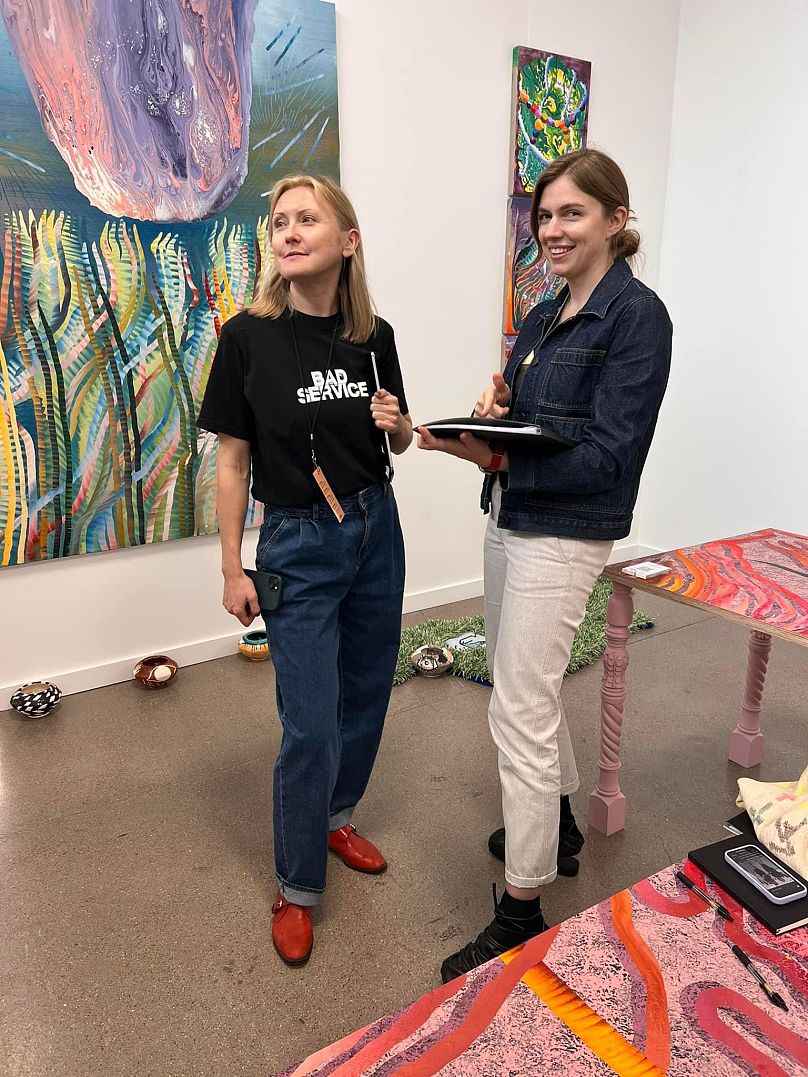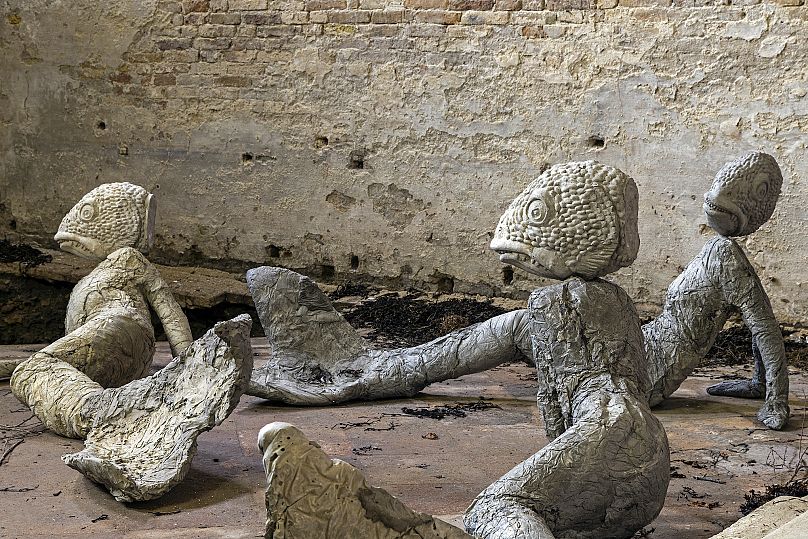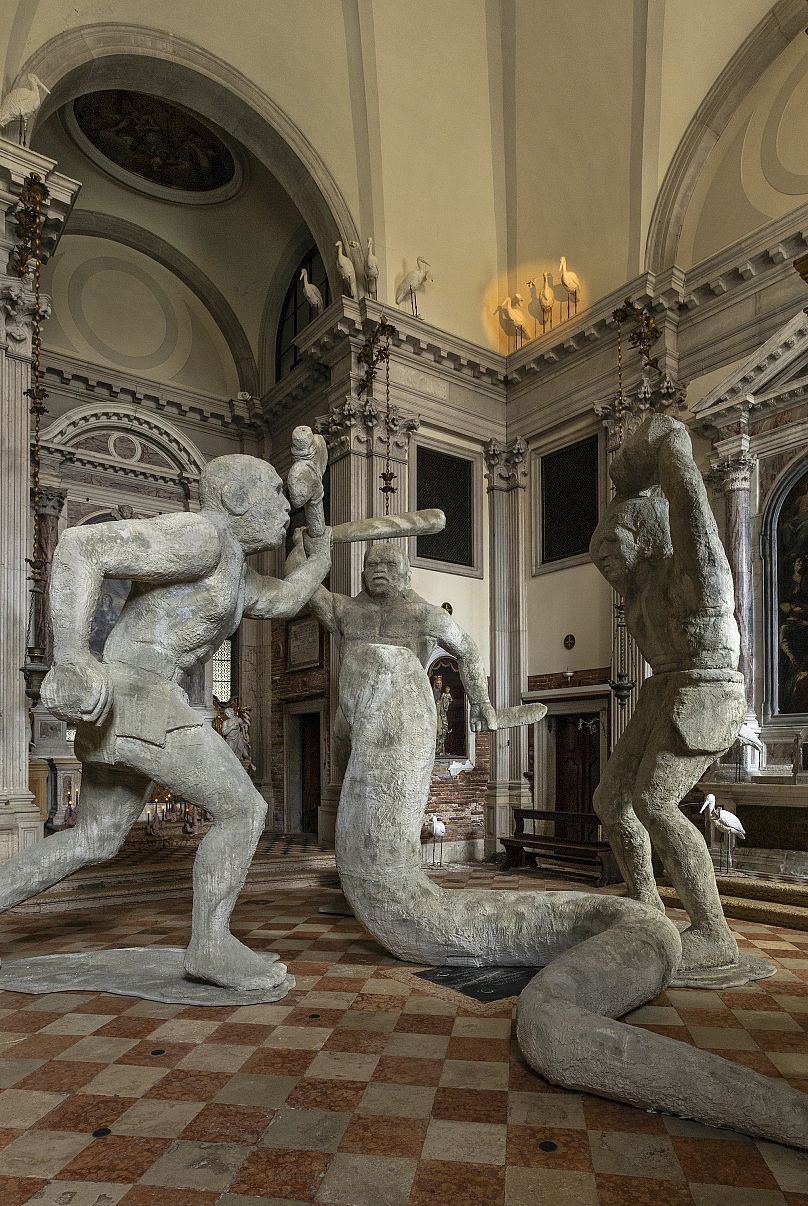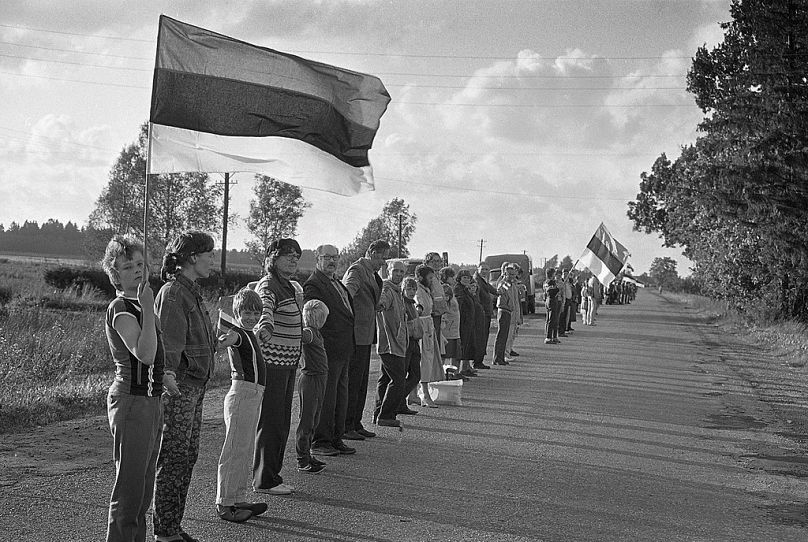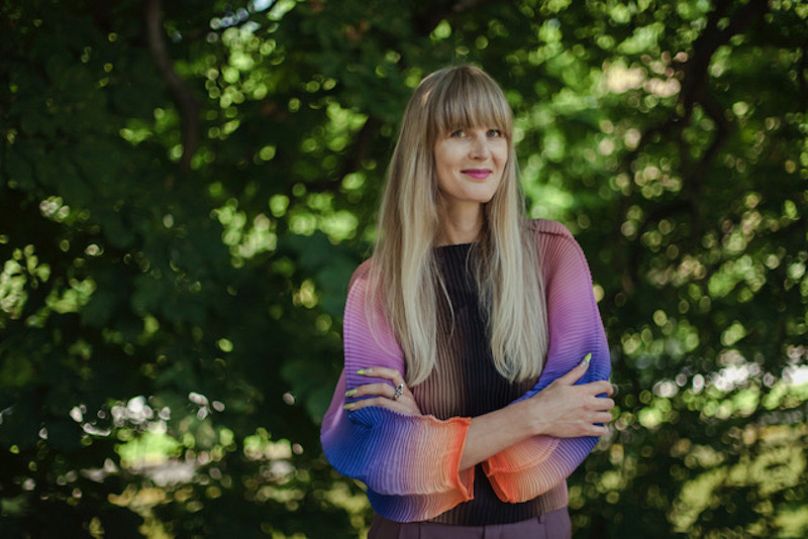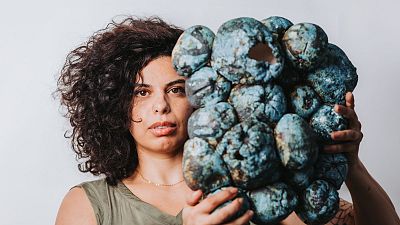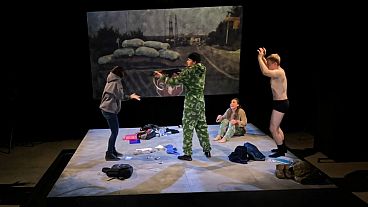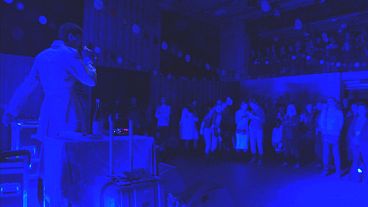From Manhattan art fairs to the Venice Biennale, a generation of Estonian artists and gallerists are putting the country's creative scene on the map.
If there’s one thing New York really doesn’t need, particularly amid a sharp downturn in the market, it’s another art fair. Or so you might have thought.
Undeterred by the city’s already crowded marketplace, an Estonian gallerist duo decided to make their mark on the New York scene this year – with a touch of distinctive Baltic flair.
Running alongside the Frieze frenzy, the Alternative art fair Esther invited collectors, dealers and art lovers to experience the architecture and history of Manhattan’s Estonian House, so named for its role as cultural centre for the diaspora Estonians who left when Estonia was annexed by the Soviet Union after World War II.
“It's considered like Estonian territory, in a way,” says Olga Temnikova of Tallinn-based gallery Temnikova & Kasela – one half of Esther’s founding team, together with Margot Samel, creator of the eponymous Tribeca gallery.
A different kind of art fair
Unusually, for the wave-making gallerists it was this historical Estonian ‘island’ on the East Side – far removed from the archetypal white cube, with its wood-panelled walls – that first sparked inspiration.
“It had this really incredible cultural, historical and architectural importance – it felt significant to take advantage of all that and have a slightly bizarre environment for galleries and artists to be able to experiment,” Samel enthuses, adding that, beyond its unique locale, Esther was designed to be quite a different kind of art fair: smaller (with 26 participating galleries), and social.
“The whole programming was centred around performances, talks, lunches, dinners and art – rather than around financial transactions,” Samel tells Euronews Culture, though by all accounts the fair was also successful on the financial front.
Even if the Baltic States were well represented at Esther, which featured artists from Estonia, Latvia and Lithuania, Temnikova and Samel are keen to point out that it is not a “Baltic art fair”, as such. “It wasn’t about showing the artists in a Baltic ‘capsule’,” Samel explains. Rather, they were excited by the “idea of artists who are making work on the periphery”, in the Baltics but also Romania and Georgia, for example, and “bringing them to the centre”.
Estonia meets a global audience
Nonetheless, Samel and Temnikova – both at Esther and beyond – are playing a key role in drawing the world’s attention to the Estonian art scene. Temnikova & Kasela, set by the water in Tallinn’s vibrant, hipster Kalamaja neighbourhood, has such internationally acclaimed local artists as Flo Kasearu, Kris Lemsalu and Merike Estna on its books; Lemsalu and Estna have also been before a New York public, on show at Margot Samel.
When it comes to launching artists onto the international stage, though, one event remains unrivalled: the Venice Biennale.
If anyone knows about the enduring importance of this epic showcase of contemporary art, it’s Maria Arusoo. She heads up the Estonian Centre for Contemporary Art (ECCA), the commissioner of the Estonian pavilion at the Venice Biennale since 1999 and the longest-standing centre of expertise for contemporary art in Estonia.
“Our main goal is to contribute to and develop the local contemporary art field, and to bring in international contacts and projects as well as find possibilities for Estonian art internationally. We introduce Estonian art, through collaborative projects and our amazing archive,” Arusoo tells Euronews Culture. “Venice has been, for most of the artists who have been there, if not the jumping stone, then nonetheless a really strong push to the international scene.”
This year, it is Edith Karlson – best known for her sculptures incorporating animal forms and anthropomorphic figures, and represented by Temnikova and Kasela – presenting at Venice, taking over the 18th-century Chiesa di Santa Maria delle Penitenti in Canareggio with her ‘Hora Lupi’ exhibition.
For her, Venice is not just about the international exposure; the process of working in such a context was, in itself, powerful, and on an individual, experiential level.
“For Estonian artists, such a diverse international context is stimulating and important. I am really curious to see what other artists are doing,” Karlson tells Euronews Culture. “On a more personal level, I have worked and lived rather locally in Estonia and it was a really special and touching experience to exhibit my art in an international context, and to see how much it matters and how well it translated.”
The 1980s generation
As well as their creative passion, Karlson, Kasearu, Lemsalu and Estna – together with Temnikova and Samel – are united by something else: all were born in the 1980s, growing up in the last days of the Soviet Union and the beginnings of Estonian (re)independence.
They stand alongside other such passionate and influential local female figures as Foto Tallinn organisers Helen Melesk and Kadi-Ell Tähiste and Kai Art Centre Artistic Director Karin Laansoo, who works between Tallinn and New York and plays a key role in promoting Estonian artists stateside. Strictly speaking, the latter two were born just either side of the 80s, but what’s a few years between friends (or creative collaborators)?
Such details aside, beyond the simple fact of now coming to artistic “maturity”, as Temnikova terms it, what is it about this generation that makes it so ripe for artistic prowess and boldness – and a desire to drive the creative scene forward?
While Samel highlights that growing up in a “state of constant flux” might catalyse creativity, Karlson sees gratitude and humour as key traits born of that tumultuous period.
“Of course this history influences us; when you have experienced the entire system collapse it creates a base for your sense of life,” she says. “The key traits of our generation are an ability to be grateful and not to take things for granted, a way to cope through humour, and a really down to earth attitude.”
Together with an appreciation of the challenges of the time, Arusoo looks back on a period of optimism and promise, particularly thinking of Estonia’s so-called Singing Revolution, and the Baltic Way peaceful political demonstration that saw around two million people join their hands to form a human chain of 690 kilometres across Estonia, Latvia and Lithuania.
“We were all born into this romantic phase of the Soviet Union, because it was already ‘melting’,” she remembers. “It was the night singing parties, where in Estonia we sang ourselves to freedom. We were holding hands as a Baltic chain… We come from this freedom generation.”
Collaboration at the core
The spirit of togetherness Arusoo describes – while not being blind to the many obstacles that remain – at least in part helps us to understand the dynamism that seems to characterise the small, but ever evolving, Estonian art scene.
“All in all, there is a quite good ecosystem of collaboration,” the CCA Estonia head says. “And this collaboration is not only within the art field; we at CCA Estonia have been collaborating with, for example, the Vabamu Museum of Occupations and Freedom and Tallinn University, which also expands our audience.”
“Being in Estonia, collaboration with other galleries and museums is key to putting yourself out there – putting your artists out there too,” Temnikova agrees, noting also the role of the current Estonian Minister of Culture, Heidy Purga, in creating the current energetic atmosphere.
For both Arusoo and Temnikova, though, it’s about more than one’s own success, or the success of the artists one represents. “If you do things in this kind of small field, you also do things to actually develop the field itself, and get the field somewhere. In this, collaboration is the key,” Arusoo believes.
In many ways, Esther’s social design – a little unorthodox for usually transaction-focused art fairs – is symbolic of this sentiment, providing a forum for discussion not only within the Estonian art scene, but for artists and gallerists from the “periphery” to address both each other and the New York art world.
“Esther, for me, was a gesture of inviting people to simply slow down and talk,” Temnikova says.
While both she and Samel are keeping schtum on the details of any possible next edition, one thing feels certain: in bringing the art world – and what felt like half of New York – to Estonia House, Esther may just help Arusoo see her hopes become reality.
“My most simple and wildest dream? That the vast array of talented artists from Estonia would have enough possibilities to work on the international scene on an equal footing with their colleagues,” she tells Euronews Culture, a tone of optimism in her voice.
Edith Karlson's ‘Hora Lupi’ will be on show at Chiesa di Santa Maria delle Penitenti in Canareggio at the 60thVeniceBiennale until 24 November 2024.

